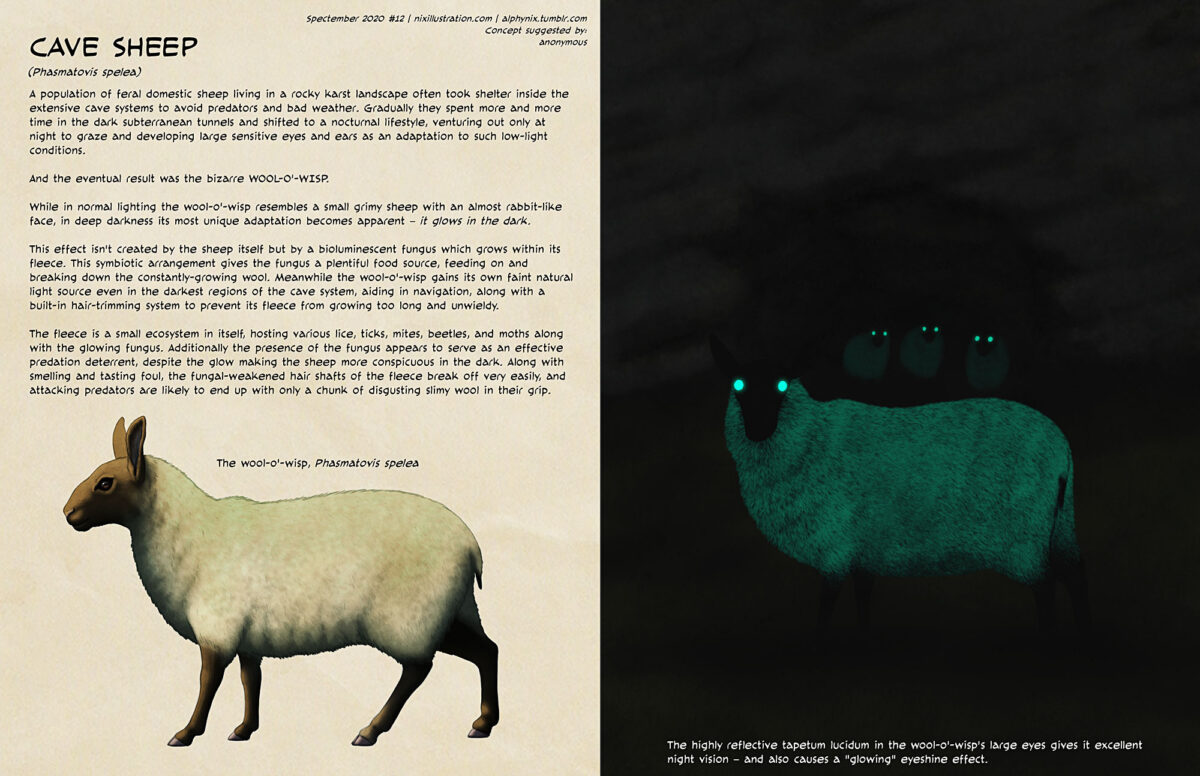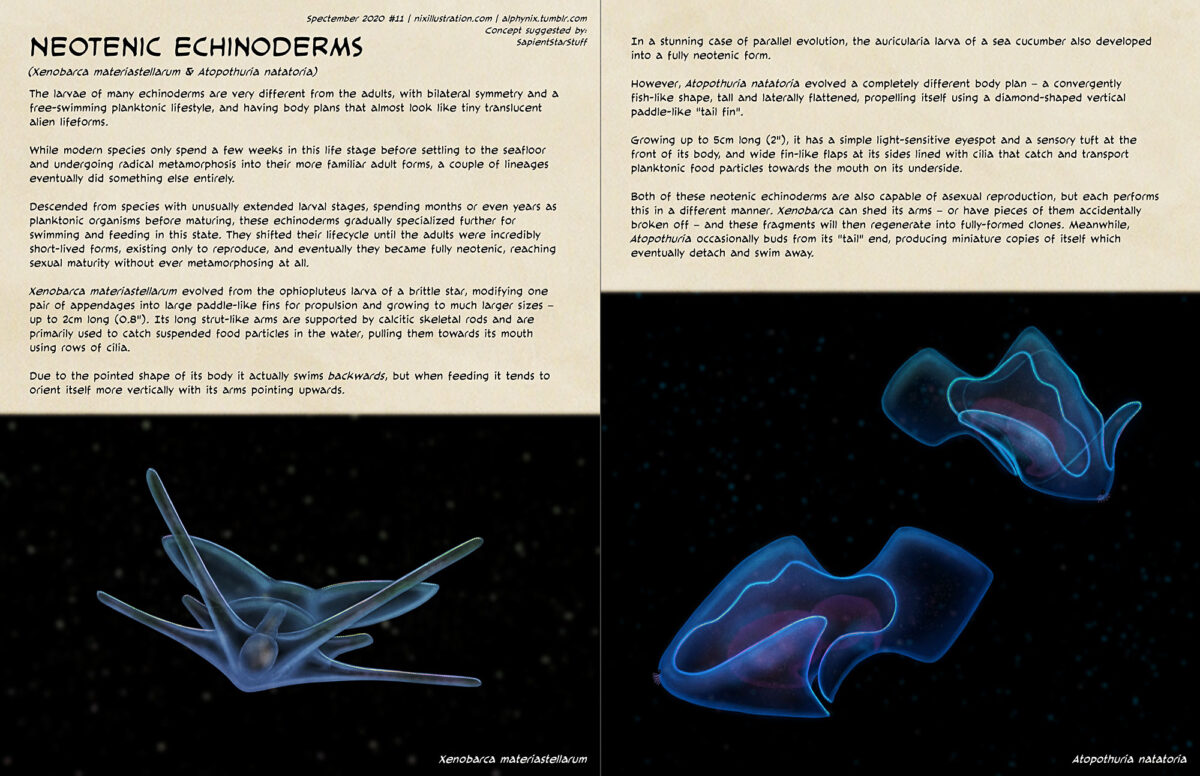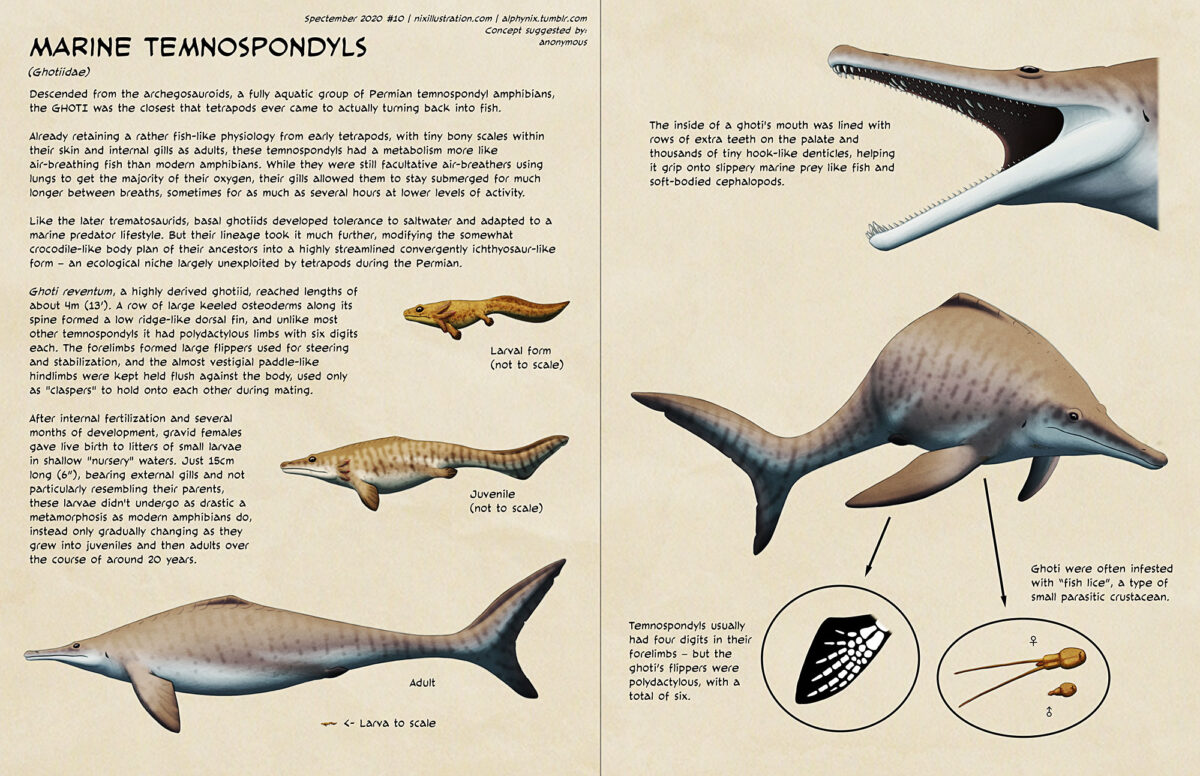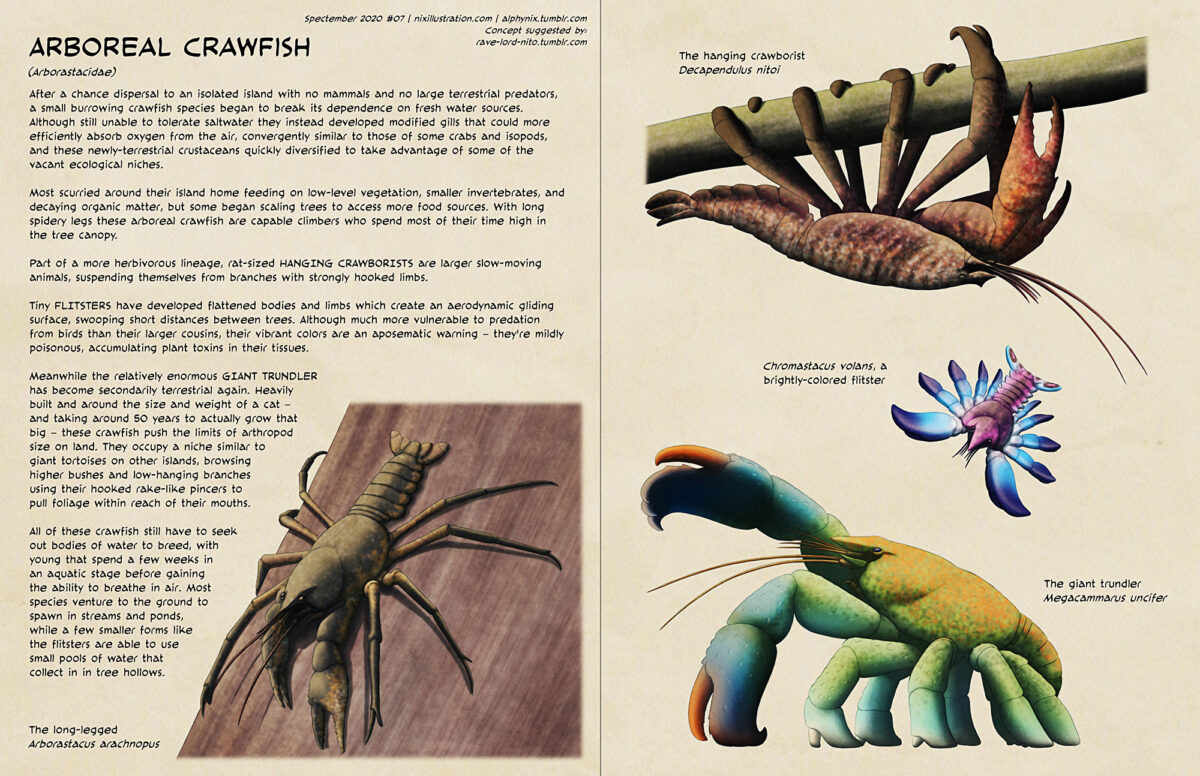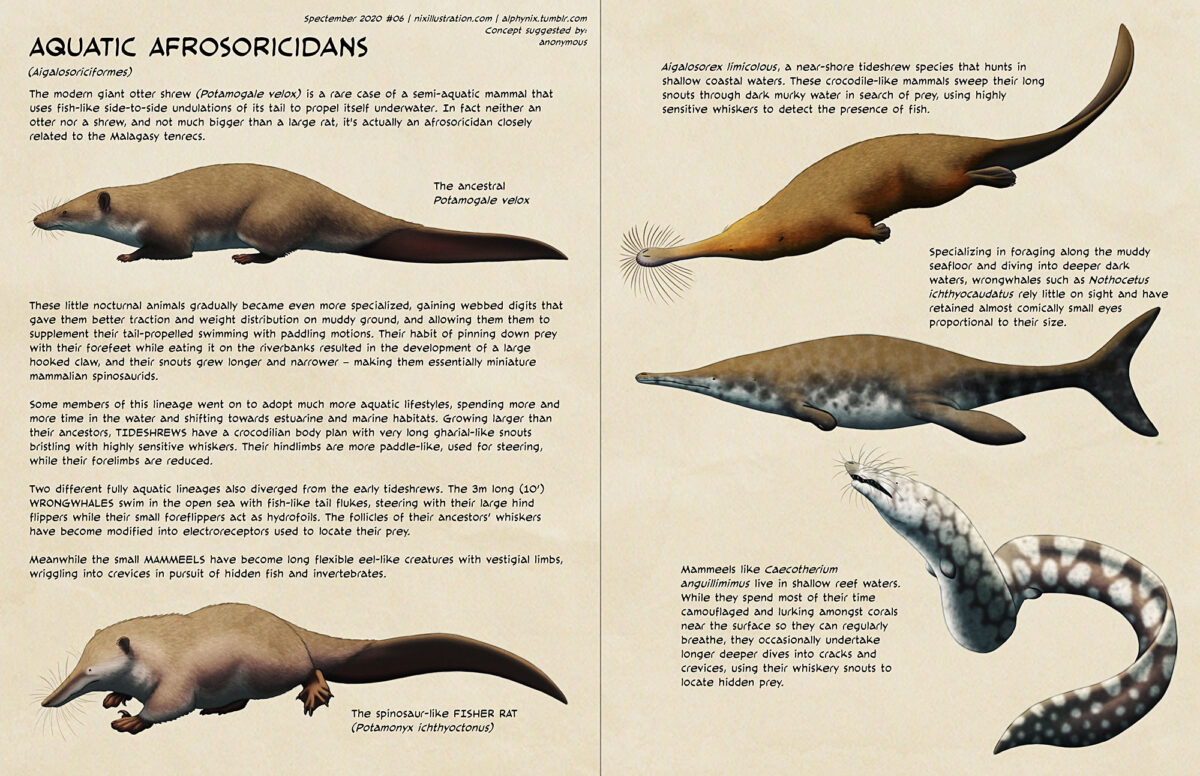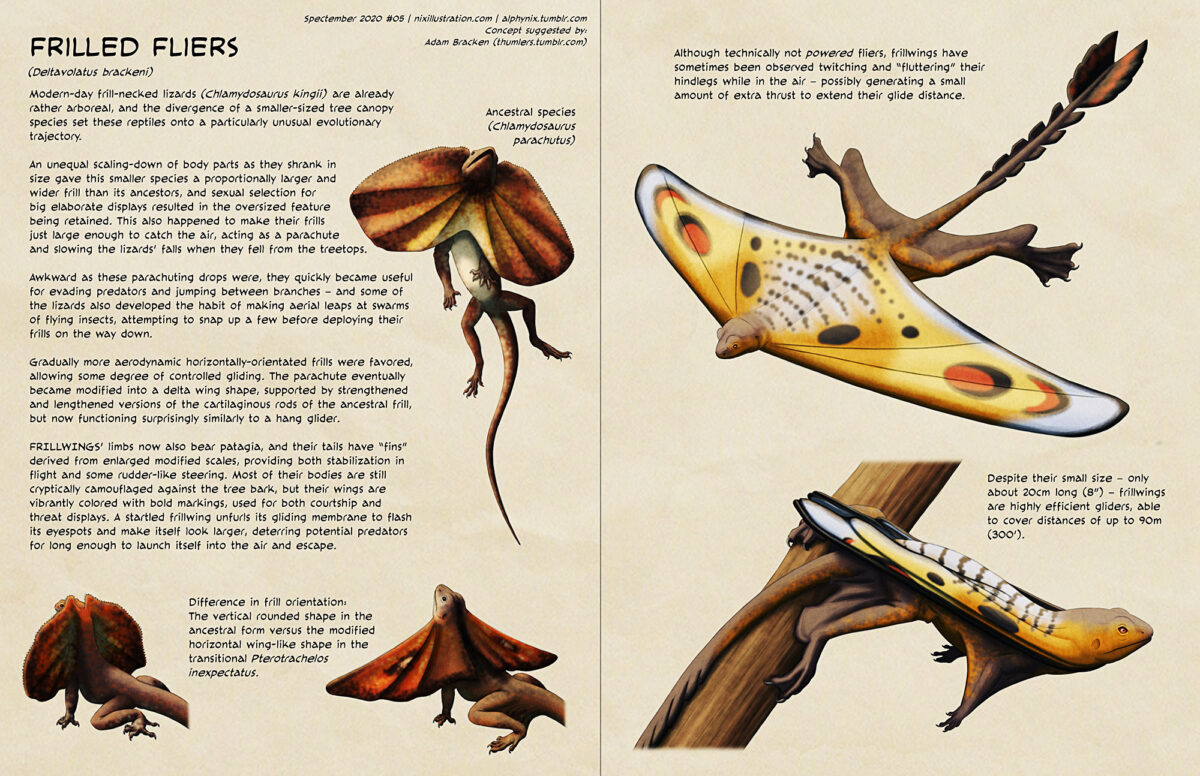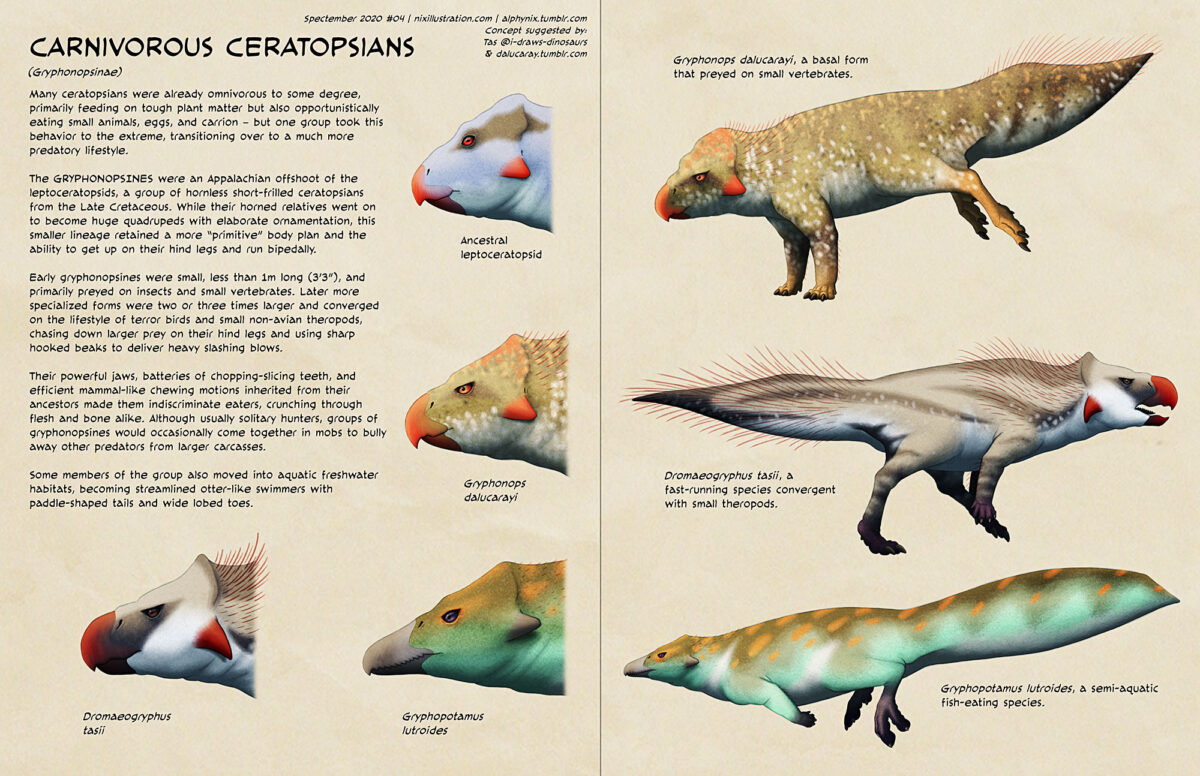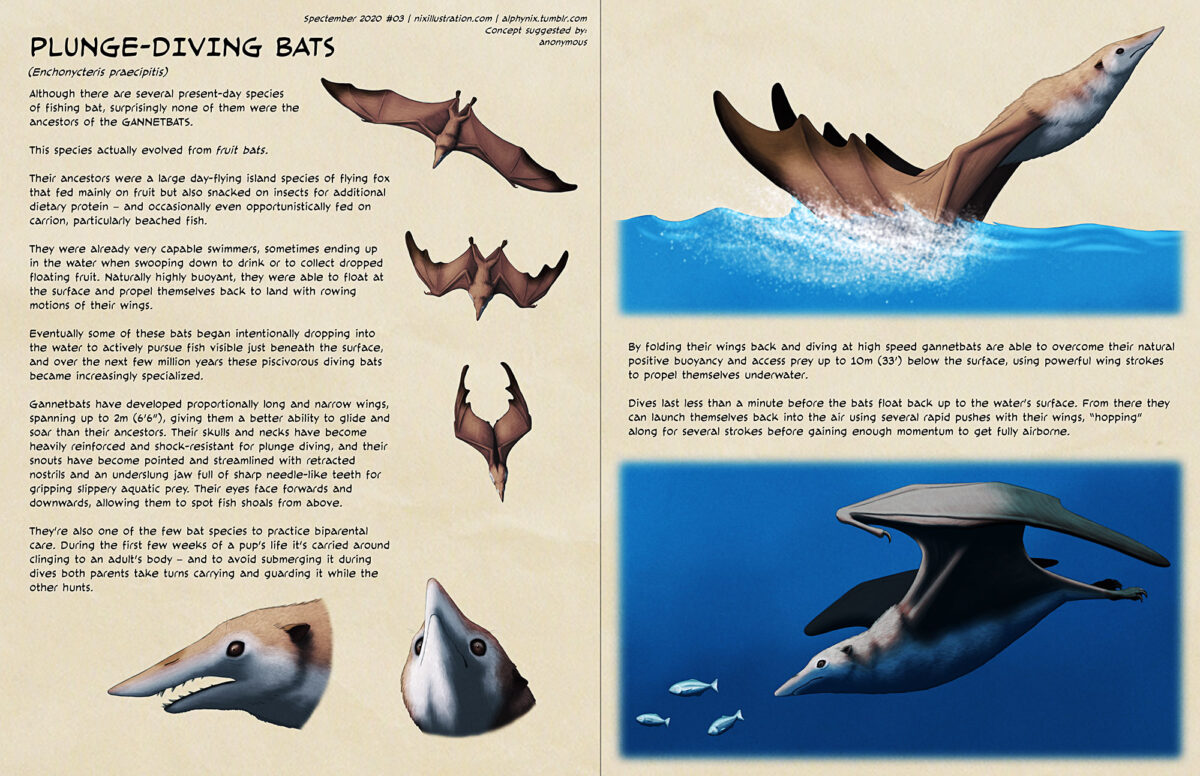Transcript for the text on the image under the cut:
Continue reading “Spectember #12: Cave Sheep”Category: science illustration
Spectember #11: Neotenic Echinoderms
Transcript for the text on the image under the cut:
Continue reading “Spectember #11: Neotenic Echinoderms”Spectember #10: Marine Temnospondyls
Transcript for the text on the image under the cut:
Continue reading “Spectember #10: Marine Temnospondyls”Spectember #09: Wading Hesperornitheans
Transcript for the text on the image under the cut:
Continue reading “Spectember #09: Wading Hesperornitheans”Spectember #08: Giant Cavy-Ungulates
Transcript for the text on the image under the cut:
Continue reading “Spectember #08: Giant Cavy-Ungulates”Spectember #07: Arboreal Crawfish
Transcript for the text on the image under the cut:
Continue reading “Spectember #07: Arboreal Crawfish”Spectember #06: Aquatic Afrosoricidans
(The submitted prompt here was “some kind of fully aquatic non cetacean or dugong mammal with a different bodyplan”.)
Transcript for the text on the image under the cut:
Continue reading “Spectember #06: Aquatic Afrosoricidans”Spectember #05: Frilled Fliers
Transcript for the text on the image under the cut:
Continue reading “Spectember #05: Frilled Fliers”Spectember #04: Carnivorous Ceratopsians
Transcript for the text on the image under the cut:
Continue reading “Spectember #04: Carnivorous Ceratopsians”Spectember #03: Plunge-Diving Bats
Transcript for the text on the image under the cut:
Continue reading “Spectember #03: Plunge-Diving Bats”
